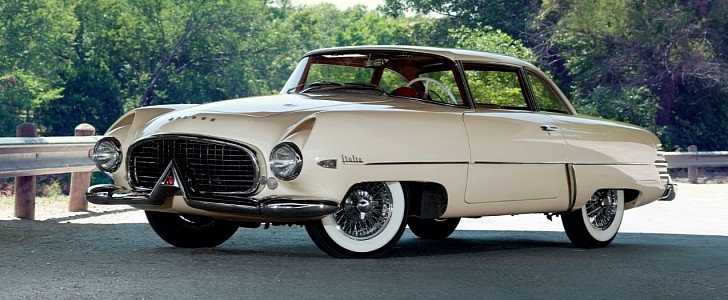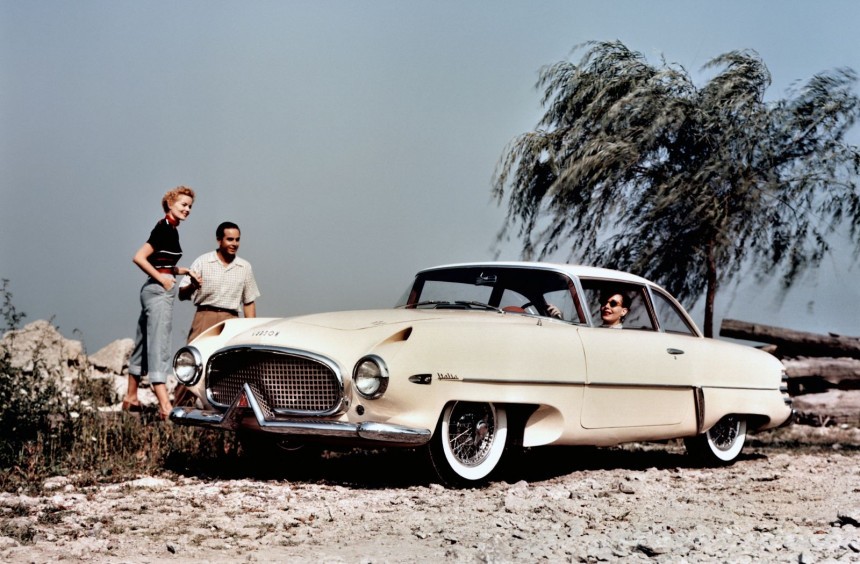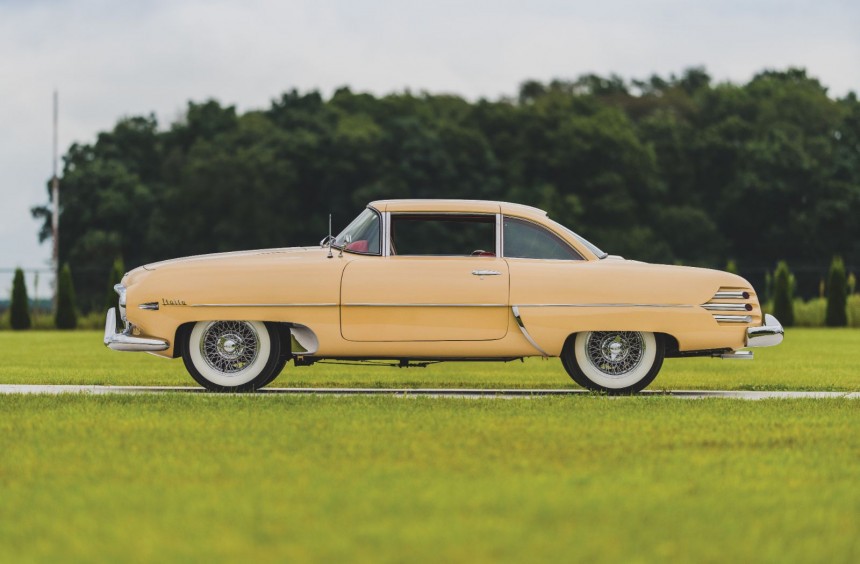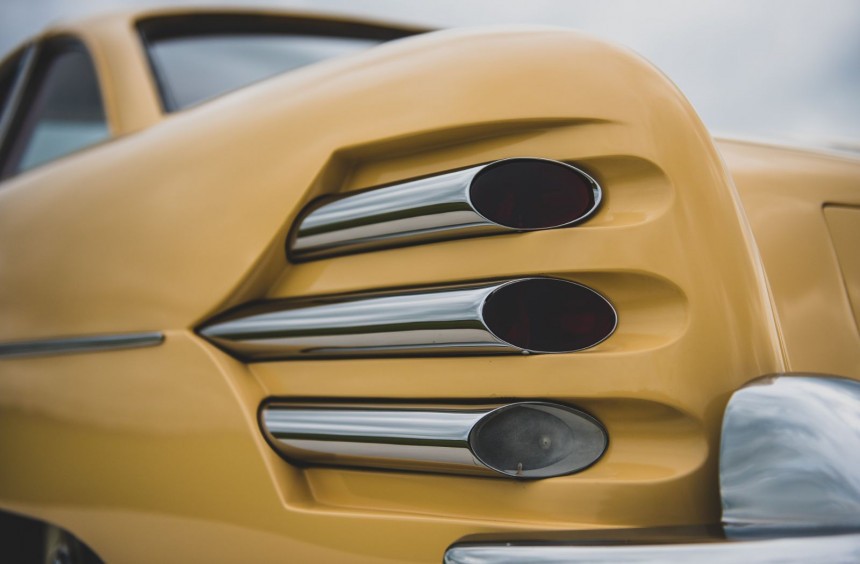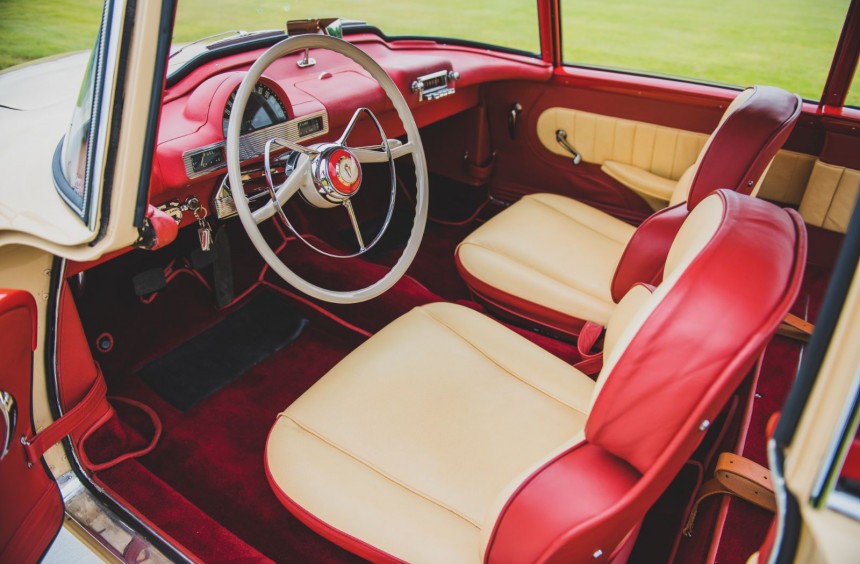Based on an outdated two-door sedan, this forgotten piece of automotive art was the first and only American vehicle to don an exquisite, Superleggera (super light) body conceived by the legendary Italian coachbuilder Carrozzeria Touring.
The Hudson Motor Car Company was founded in Detroit back in 1909. Just twenty years later, it had grown into the third-largest carmaker in the U.S., behind Ford and Chevrolet.
Although it pioneered many features that became widespread throughout the automotive industry, such as dual brakes, the balanced crankshaft, or the dashboard-mounted oil pressure gauge, Hudson struggled to overcome the Great Depression years. When things were beginning to improve, America entered the Second World War, which forced the company to cease car production and focus on aircraft parts or naval engines.
Production resumed in 1946, but despite its efforts and the relative success of the NASCAR-dominating Hornet, the manufacturer never managed to fully recover. It all ended in 1954 when it merged with Nash Motors to form the American Motors Corporation (AMC).
However, Hudson didn’t go down without a fight, and a year before the merger, it introduced a beautiful, limited-production, two-door compact coupe that featured a lightweight body hand-crafted in Italy by one of the world’s most famous coachbuilders.
It all starts in 1950 when, along with the full-size Hornet, the company began working on a smaller model inspired by the Fiat 1400. Eventually dubbed Jet, its development was hampered by Hudson president A.E. Barit, who constantly disagreed with stylists and advisors, delaying the release of the car by at least a year. When it finally hit the roads in 1953, the Jet was deemed outdated despite having a fairly fuel-efficient, 104-hp, inline-six, so it failed to meet expectations in terms of sales.
Anticipating this outcome, chief designer Frank Spring, who was enraged by the styling changes imposed by Barit, convinced vice-president Stuart Baits to greenlight the creation of an upscale, sporty prototype version of the Jet.
Inspired by the beautiful, European-styled Chrysler’s Ghia specials, Spring traveled to Europe where he met Carlo Felice "Cici" Bianchi Anderloni, the head of Carrozzeria Touring. Back then, the Milanese company was among the world’s most renowned coachbuilders, having a close collaboration with the likes of Alfa Romeo or Ferrari.
After analyzing the Jet frame specs and drawing a sketch on a napkin, Anderloni agreed to take on the project. Shortly thereafter, a fully assembled, two-door Hudson Jet coupe was shipped to Italy where it was extensively tested, then stripped of its original bodywork.
In the months that followed, Touring craftsmen hand-built a stunning aluminum body over a thin steel tube framework using their patented Superleggera construction method.
The result was a streamlined structure that was not only 10 inches (254 mm) lower, but also looked drastically different than the standard Jet’s conservative (or downright boring) body.
The front fenders incorporated V-shaped functional scoops that redirected cool air to the front drum brakes. On each side, a subtle quarter scoop served the same function, albeit redirecting air to the rear brakes. Another exquisite feature was a set of three stacked chrome tubes emerging from scalloped cut-outs in the rear quarter panels. They resembled exhaust tips when viewed from the side, but in fact, they housed directional and back-up lamps.
Touring also revamped the interior, giving it a European flair. The form-fitting bucket seats covered in red and white leather were made from three different densities of foam rubber for maximum comfort. Their reclining backrests were comprised of two contoured bolsters, one for the upper part of the body and one for the lower back. The latter part was firmer for better lumbar support, while the space between the two bolsters and a couple of rounded vents integrated into the seat frame were devised to provide natural ventilation.
Other standard interior elements included leather seatbelts, a non-reflecting dash finished in red, and an AM/FM radio (not even Cadillacs came with a standard radio at the time).
Impressed with the finished prototype, Hudson’s higher-ups approved a limited series production run of 50 units for the 1953 model year. Priced around $4,800 ($51,005 today), the car called Italia was powered by a Twin H 202-ci (3.3 liters), straight-six, with a higher, 8:1 compression ratio than the standard Jet’s unit and dual single-barrel carbs. Matted to a three-speed manual with a column-mounted shifter, the engine produced 114 hp.
Despite being praised for its magnificent styling which earned it worldwide recognition, the Italia was deemed underpowered by potential buyers who were disappointed that the Hornet’s more capable engine was not offered. Because of that and the exorbitant price tag, Hudson only managed to sell 25 units.
Underappreciated at the time of its release and forgotten by enthusiasts for decades, the Italia is now finally earning the respect it deserves. As the first and only American vehicle to feature a coachbuit body by Carrozzeria Touring, it is currently a prized collector’s item. An example in mint shape, such as the one featured in the gallery, Is worth well over $350,000. Chassis no. IT10010 went under the hammer at an RM Sotheby’s auction in 2020, fetching $362,500.
You can learn more about this automotive work of art in the video below by Worldwide Auctioneers.
Although it pioneered many features that became widespread throughout the automotive industry, such as dual brakes, the balanced crankshaft, or the dashboard-mounted oil pressure gauge, Hudson struggled to overcome the Great Depression years. When things were beginning to improve, America entered the Second World War, which forced the company to cease car production and focus on aircraft parts or naval engines.
Production resumed in 1946, but despite its efforts and the relative success of the NASCAR-dominating Hornet, the manufacturer never managed to fully recover. It all ended in 1954 when it merged with Nash Motors to form the American Motors Corporation (AMC).
However, Hudson didn’t go down without a fight, and a year before the merger, it introduced a beautiful, limited-production, two-door compact coupe that featured a lightweight body hand-crafted in Italy by one of the world’s most famous coachbuilders.
Anticipating this outcome, chief designer Frank Spring, who was enraged by the styling changes imposed by Barit, convinced vice-president Stuart Baits to greenlight the creation of an upscale, sporty prototype version of the Jet.
Inspired by the beautiful, European-styled Chrysler’s Ghia specials, Spring traveled to Europe where he met Carlo Felice "Cici" Bianchi Anderloni, the head of Carrozzeria Touring. Back then, the Milanese company was among the world’s most renowned coachbuilders, having a close collaboration with the likes of Alfa Romeo or Ferrari.
In the months that followed, Touring craftsmen hand-built a stunning aluminum body over a thin steel tube framework using their patented Superleggera construction method.
The result was a streamlined structure that was not only 10 inches (254 mm) lower, but also looked drastically different than the standard Jet’s conservative (or downright boring) body.
Touring also revamped the interior, giving it a European flair. The form-fitting bucket seats covered in red and white leather were made from three different densities of foam rubber for maximum comfort. Their reclining backrests were comprised of two contoured bolsters, one for the upper part of the body and one for the lower back. The latter part was firmer for better lumbar support, while the space between the two bolsters and a couple of rounded vents integrated into the seat frame were devised to provide natural ventilation.
Other standard interior elements included leather seatbelts, a non-reflecting dash finished in red, and an AM/FM radio (not even Cadillacs came with a standard radio at the time).
Despite being praised for its magnificent styling which earned it worldwide recognition, the Italia was deemed underpowered by potential buyers who were disappointed that the Hornet’s more capable engine was not offered. Because of that and the exorbitant price tag, Hudson only managed to sell 25 units.
Underappreciated at the time of its release and forgotten by enthusiasts for decades, the Italia is now finally earning the respect it deserves. As the first and only American vehicle to feature a coachbuit body by Carrozzeria Touring, it is currently a prized collector’s item. An example in mint shape, such as the one featured in the gallery, Is worth well over $350,000. Chassis no. IT10010 went under the hammer at an RM Sotheby’s auction in 2020, fetching $362,500.
You can learn more about this automotive work of art in the video below by Worldwide Auctioneers.
